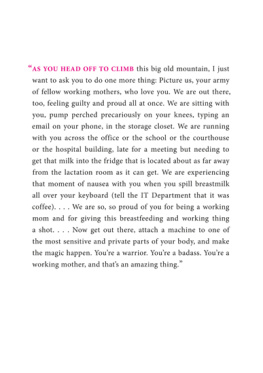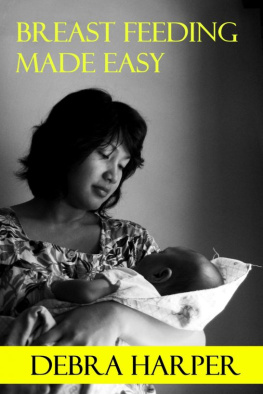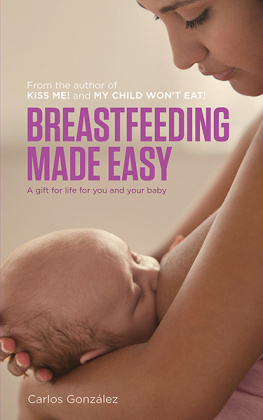
Editor: Holly Dolce
Designer: Darilyn Lowe Carnes
Production Manager: True Sims
Library of Congress Control Number: 2015934789
ISBN: 978-1-4197-1870-0
Copyright 2015 Jessica Jackson Shortall
Published in 2015 by Abrams Image, an imprint of ABRAMS. All rights reserved. No portion of this book may be reproduced, stored in a retrieval system, or transmitted in any form or by any means, mechanical, electronic, photocopying, recording, or otherwise, without written permission from the publisher.
Abrams Image books are available at special discounts when purchased in quantity for premiums and promotions as well as fundraising or educational use. Special editions can also be created to specification. For details, contact or the address below.
Because of the dynamic nature of the Internet, any web addresses or links contained in this book may have changed since publication and may no longer be valid.
The material contained in this book is presented only for informational purposes. Every effort has been made to ensure that the information provided is accurate and up to date, but no legal responsibility is accepted for any errors, omissions, or misleading statements. It is not the purpose of this book to provide medical advice. Readers should seek health and safety advice from physicians and other medical professionals.
The views expressed in this work are solely those of the author.

115 West 18th Street
New York, NY 10011
www.abramsbooks.com
This book is dedicated to every woman
who has ever sat on a public toilet with a
breast pump balanced on her knees.
Acknowledgments
I call this book my love letter to working mothers. But the process of writing this book has in many ways been a love letter to me, from friends and strangers who have made this project possible.
Thank you to the working mothers and HR professionals who made the time to share your wisdom and war stories.
Thank you to my beloved TOMS coworkers for letting me disappear into storage closets, leave meetings early, pump on conference calls, and store milk in the office freezer. I never doubted that you supported me in providing for my kids. Thanks also for asking just enough, and not too many, weird questions about breastfeeding.
Thank you to Candice Kislack, my lifeline on an epic journey to Nepal. Everyone should have a boss and friend like you.
Thank you to Karen Borchert and Kate Canales for believing in this book way before it was a book, and for being, along with my sister, Ianth, the people I text whenever something astonishing related to motherhood happens.
Thank you to every connector, cheerleader, blogger, funder, volunteer reader, and promoter who has championed this book. You are too numerous to name, but I appreciate the hell out of each of you.
Thank you to my editors: Holly Dolce and the team at Abrams; Tiffany Gallagher, CLC (a.k.a. The Boob Geek), who was both copyeditor and technical advisor, and whose input made this book so much better; and Sue Toth, who let me keep my Oxford comma. And God bless my volunteer readers, who worked wonders: Taylor Skinner, Karen Borchert, Jenny Magic, Erin Olson, and Tiffany Galligan.
Thank you to my agent, Amy Hughes at DCL Agency, who pumped in a storage closet for her own baby, and who just kept right on believing in this book, and in me, and in finding the right home for this message and these stories.
Thank you to the experts who cast discerning eyes on the manuscript: Courtney W. Pickering, MD; Robyn Roche-Paull, BSN, RN, IBCLC; Cindy Leclerc RN, IBCLC; and Jana Stockham RN, IBCLC.
Thank you to my family (wonderful in-laws very much included). It will never stop amazing me that all of you so unflinchingly support every eclectic dream I pursue. Special thanks to my husband, Clay, who has believed in this book and every other endeavor Ive undertaken, and my children, Otis and Etta, who are simply magical.
Finally, thank you to every airport TSA agent who has waved me through security without dismantling my pump or opening my milk to test it. You are the real heroes.
Contents
Introduction
Heres an idea: Pretty soon after we have babies, lets use machines to extract breastmilk from our bodies several times a day while we are working demanding jobs. Lets do this when we are already exhausted, anxious, stressed, and overwhelmedand trying to prove to our employers that were back.
Who on earth would do this? Well, for starters:
A police officer: I pumped in the car at a site where I was helping to recover the skeleton of a murder victim from a creek bed.
A teacher: Ive been walked in on twice, despite displaying do-not-disturb signs. Both were male. One backed away slowly. The other stayed to chat.
A communications director: Im limited to thirty-minute pumping sessions, so I often have to leave in the middle of an hour-long meeting and call in for the remainder.
A doctor at a hospital: I had to pump while answering pages, talking on the phone, or eating lunch. Once, I forgot my bottles and had to pump into urine collection cups. I swear they were sterile.
... and me. Im a working mother of two, and when I had my first baby, working and breastfeeding became one of the most difficult experiences of my professional life.
Continuing to breastfeed after I returned to work was something I really wanted to do. But it also produced more anxiety and guilt and feelings of being overwhelmed than any other part of parenting. It was a very physical job in the midst of an already physically trying time in my lifethe lugging of equipment and milk, the running between meetings and pumping sessions, and the finding of private places in which to pump.
It was also an emotional job, filled with second guesses. It was time-consuming, draining (literally), anxiety-producing, and stressful. Being someones sole (or main) source of nutrition is hard work.
It was rewarding, too, and I did it as best as I could. I was the first woman to have a baby at my company, so I had no precedent and no mentors at the office. I did about a dozen domestic and international business trips during the nine months I breastfed my son. I pumped in storage closets and on airplanes and in far-flung locations in developing countries. I fought TSA agents over my frozen milk. I stared at photos of my son while pumping, trying to force my body to produce just a little more milk. I spilled tears onto those same photos. I also brought that milk home with a sense of pride and relief every day.
I counted every single ounce I made and stressed about my son beating me by eating more than I had pumped in a given day. I did all of this for nine months, and then I woke up one day and just knew there was no more gas left in the tank. So I stopped.
The hows of working and breastfeeding are many, and can be overwhelming and confusing: how to build up a stash of milk, how to find work-appropriate clothes you can pump in, how to talk to your boss about your needs, how to commandeer and hack virtually any space to pump ina huge pile of hows that no one ever bothered to jot down for us triple threat mothers (worker/parent/milk-maker).
In a world overflowing with more parenting books and Pinterest boards and mommy blogs than you can shake a positive pregnancy stick at, why is the Motherhood Industrial Complex failing us when it comes to breastfeeding in the working world? There are stacks and stacks of books to tell us how to get pregnant, be pregnant, birth a baby, nurse a baby, sleep train a baby, follow its development on a moment-by-moment basis, and raise a child. These books are filled with opinions (often conflicting) on the right and wrong ways to do all of these things.
Next page








